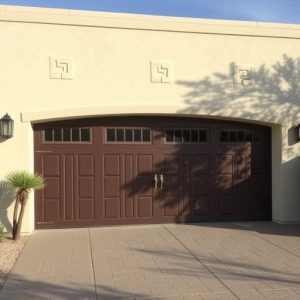Understanding sensor technology is crucial for enhancing the safety of Tucson garage doors. Sensors detect obstacles and prevent accidents by stopping or reversing door movement. Types include photoelectric, inductive, and laser sensors, each with unique advantages. Tucson garage doors are equipped with advanced safety features like proximity, temperature, and emergency stop buttons. Installing and maintaining these sensors is a straightforward process that boosts home security. Regular calibration, alignment checks, and maintenance ensure optimal performance and continuous operation of the safety system.
In Tucson, enhancing garage door safety through sensor installation is a smart step. This article guides you through understanding sensor technology, exploring types suitable for local climate, and offering a comprehensive installation process. Learn about calibration, testing, troubleshooting, and maintenance tips to ensure your Tucson garage doors operate at peak performance. Optimize security and peace of mind with these essential practices.
- Understanding Sensor Technology for Garage Door Safety
- Types of Sensors Used in Tucson Garage Doors
- Installation Process: Step-by-Step Guide
- Calibration and Adjustment Techniques
- Testing and Troubleshooting Common Issues
- Maintenance Tips for Optimal Performance
Understanding Sensor Technology for Garage Door Safety
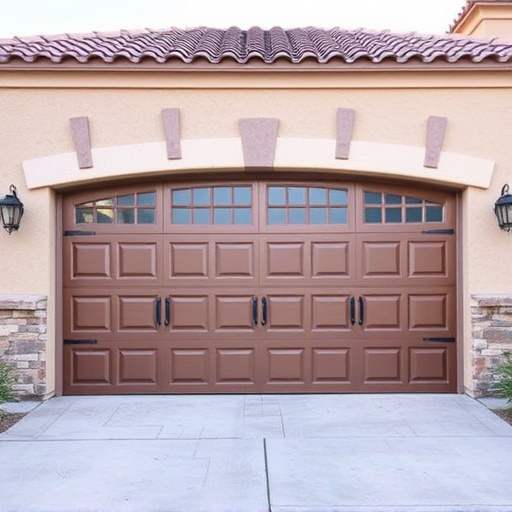
Understanding Sensor technology is a crucial step in enhancing the safety of your Tucson garage doors. These sensors are designed to detect obstacles and prevent accidents by automatically stopping or reversing the door’s movement when they sense an object in their path. There are different types of sensors commonly used, including photoelectric sensors, inductive sensors, and laser sensors, each offering unique advantages for various applications.
For Tucson garage doors, photoelectric sensors are a popular choice due to their reliability and ease of installation. They emit light beams and detect any interruption caused by an object, ensuring the door’s safe operation. Inductive sensors, on the other hand, use electromagnetic fields to identify metallic objects, making them suitable for environments where non-metallic items might obstruct the door’s path. Laser sensors provide a highly accurate range detection system, ideal for large garage doors or areas with complex layouts.
Types of Sensors Used in Tucson Garage Doors
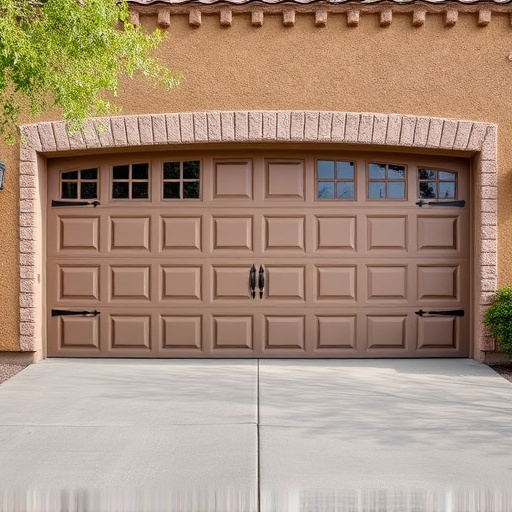
Tucson garage doors often incorporate a variety of sensors to enhance safety and security. These include proximity sensors, which detect objects or people approaching the door, and photoelectric sensors that use light beams to monitor the clear space in front of the door. For instance, when a vehicle or person enters the sensor’s range, the Tucson garage door automatically reverses its direction to prevent accidents.
Additionally, temperature sensors are crucial for ensuring optimal performance during varying weather conditions. These sensors help regulate the garage door’s operation, preventing damage caused by extreme temperatures. Moreover, some advanced systems feature emergency stop buttons and alarm systems that trigger when the door is in motion, providing an extra layer of protection for both residents and vehicles inside the garage.
Installation Process: Step-by-Step Guide
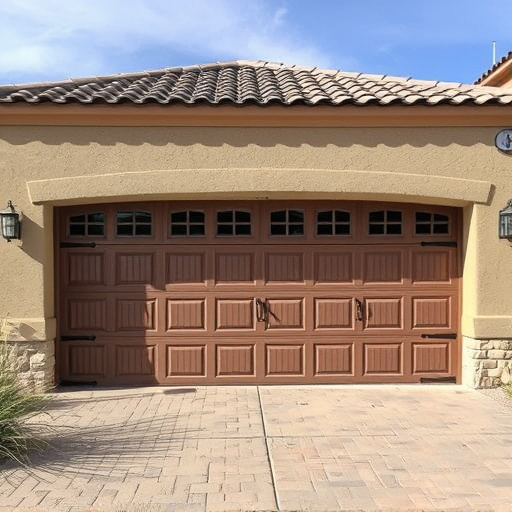
Installing sensors for enhanced safety on your Tucson Garage Doors is a straightforward process that can significantly improve your home’s security. Here’s a step-by-step guide to help you through the installation.
1. Preparation: Begin by ensuring your garage door is closed and securely locked. Gather all necessary tools, including your new sensors, screwdrivers, and any other hardware provided. Make sure the area around the door is clear of obstructions for easy access.
2. Sensor Placement: Identify the optimal locations for installing your sensors. Typically, these are placed on the garage door track or near the door’s opening mechanism. For Tucson Garage Doors, consider areas where a potential intruder could bypass them; this might include gaps around the door or weak points in the frame. Securely attach the sensors using the provided hardware, ensuring they’re firmly in place and aligned correctly.
Calibration and Adjustment Techniques
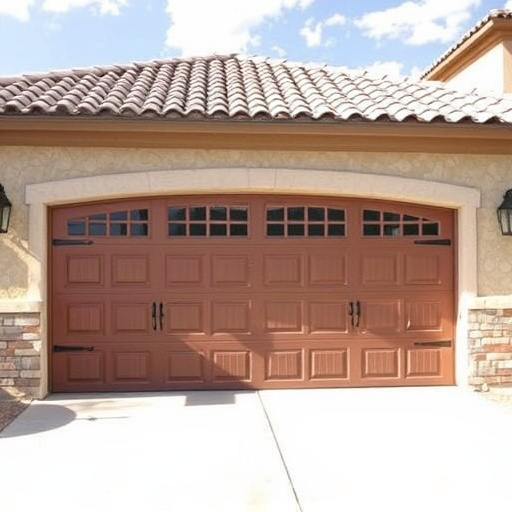
Calibration and adjustment techniques play a vital role in enhancing the safety of Tucson garage doors. Regular calibration ensures that sensors accurately detect any obstructions, preventing potential accidents. This process involves fine-tuning the sensitivity levels and positioning of sensors to meet specific door configurations. For instance, adjusting photoelectric sensors requires careful placement to avoid false triggers from nearby objects or pets.
Professionals recommend periodic calibrations, especially after installations or when doors undergo modifications. By utilizing advanced tools and methodologies, technicians can optimize sensor performance, ensuring they function reliably under various conditions. These techniques not only improve safety but also contribute to the overall efficiency of garage door operations, creating a seamless and secure environment for Tucson residents.
Testing and Troubleshooting Common Issues
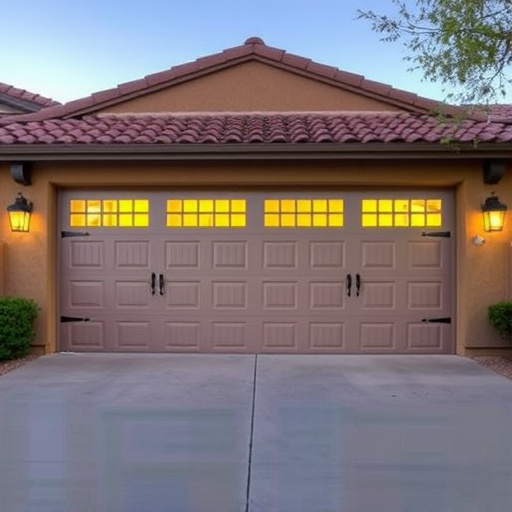
When testing and troubleshooting common issues with sensor installation for enhanced safety in Tucson Garage Doors, it’s crucial to begin by ensuring proper alignment. Sensors must be precisely positioned to detect obstacles effectively. A slight misalignment could lead to false readings or missed detections, compromising overall safety. Regularly inspect the sensors’ placement, adjusting as needed to maintain optimal coverage.
During testing, pay close attention to any unusual behavior. If a sensor fails to activate when an obstacle is present or triggers unnecessarily, there might be a wiring issue, sensor malfunction, or interference from external sources. Identifying and addressing these problems promptly ensures the continuous operation of your Tucson Garage Doors safety system, enhancing peace of mind for homeowners.
Maintenance Tips for Optimal Performance
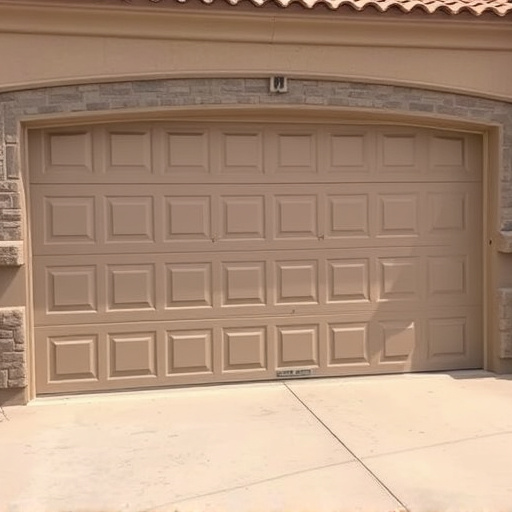
Regular maintenance is key to ensuring your Tucson Garage Doors remain in top condition and provide enhanced safety features effectively. Here are some essential tips to keep them running smoothly:
Inspect your garage door sensors regularly, as they play a critical role in detecting obstacles and preventing accidents. Calibrate them according to the manufacturer’s instructions to ensure accurate readings. Remove any dust or debris that might interfere with their function, especially after construction or renovation projects. Keep an eye out for any signs of damage or wear and promptly replace worn-out components to maintain optimal performance.
In enhancing the safety of Tucson garage doors, sensor installation and adjustment play a pivotal role. By understanding sensor technology, choosing the right types of sensors, following meticulous installation processes, and employing effective calibration techniques, you can ensure your garage door operates smoothly while protecting your family and property. Regular testing, troubleshooting, and maintenance will further solidify these benefits, making your Tucson garage doors a reliable and secure part of your home’s overall safety system.
